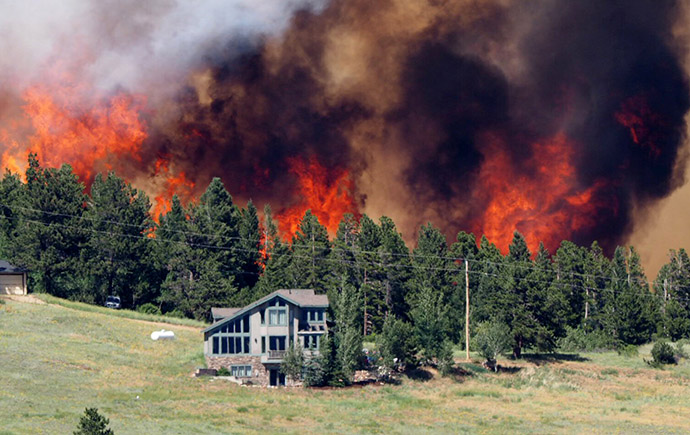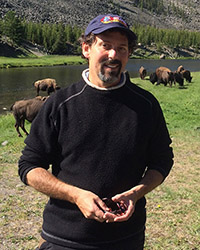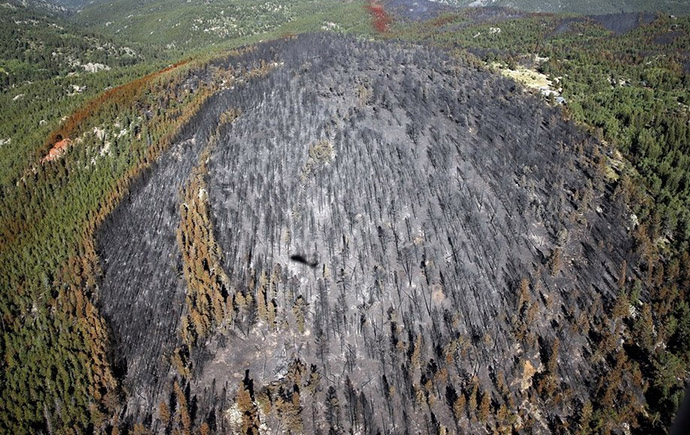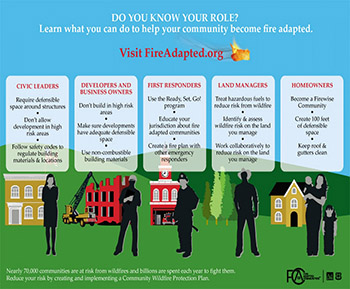“Social-Impact Network” For Wildfire Adaptation
|
|
In the face of natural hazards, resource scarcity, climate change, and other social-ecological challenges, how does a community adapt, and how can communities combine forces to contribute to transformational change? Dr. Bruce Goldstein, an associate professor in Environmental Design and Environmental Studies and core faculty at the Center for Science and Technology Policy Research (CSTPR) at the University of Colorado Boulder takes on this pressing question. At first glance, the root cause of environmental crises is too daunting for communities to tackle; however, Goldstein sees communities as the engine for institutional transformation. By organizing themselves into “learning networks,” communities can apply local knowledge to address issues that are very specific to their place and time, and team together to transform unstable practices into sustainable ones. Learning networks enable people to create new ideas by serving as a laboratory for best practices, and a forum for addressing basic questions like, “What is the system in which I live and how do I want to change it?” Let’s take a look at wildfires, a pressing issue here in the western United States and one that Goldstein actively tackles. According to the Forest Service, an average of more than 73,000 wildfires burn about 7.3 million acres (over 2.9 million hectares) of land annually. Locally, Colorado experienced 6 major wildfires since 2012 that burned over 240,000 acres (over 97,000 hectares) of land, with many smaller fires occurring during this time. Typically, wildfire impacted regions rely on a fire agency to protect them and mitigate the wildfire once it has started. Because of this, around 70% of the Forest Service budget goes towards fire suppression. Yet wildfires are a natural and necessary ecological process. Efforts to suppress them only make wildfires more likely as fuels accumulate in even-aged stands, producing increasingly intense fires that are both more deadly and ecologically destructive. We therefore need to rethink how we approach wildfires and change our mindset from “suppression” to “adaptation and ecological restoration.” |
|
Part of this work takes place among fire managers, and Goldstein has been studying a Forest Service – Nature Conservancy initiative called the “Fire Learning Network” since 2006; however, communities were never a large part of this conversation, and they are a critical part of reforming how we address wildfire. Beginning in 2013, Goldstein began studying a new learning network, the Fire Adapted Communities Learning Network (FACNET), which is aimed at connecting communities from across the United States in order to solve complex issues associated with wildfire adaptation. Membership is diverse, including city fire departments, state forest services, fire councils, Native American tribes, scientists, and various other individuals. |
|
Goldstein leads his CSTPR-based research group in studying FACNET. For instance, doctoral student Jeremiah Osborne-Gowey is focusing on interviews with stakeholders in FACNET communities such as Island Park, ID and Jacksonville, FL to determine the cultural, political, social, and ecological context of fire adaptation. Meanwhile, research associate Tom James is attending meetings between FACNET members in Ashland, OR who seek to exchange ideas and foster collaboration across their communities. Goldstein notes, “Our partnership with the FACNET is deep. We built a lot of trust and shared understanding, beginning over ten years ago when we began studying the U.S. Fire Learning Network. We aim to enhance our insight into the network through constant interaction and exchange with the netweavers, applying a participatory action research approach. Our goal is to learn together, in ways that enhance their ability to adapt their network design.” For more information visit the CSTPR website, Goldstein’s lab website, or the Fire Adapted Communities Learning Network website. |
|



 by Dan Zietlow, PH.D., CSTPR Writing Intern
by Dan Zietlow, PH.D., CSTPR Writing Intern
